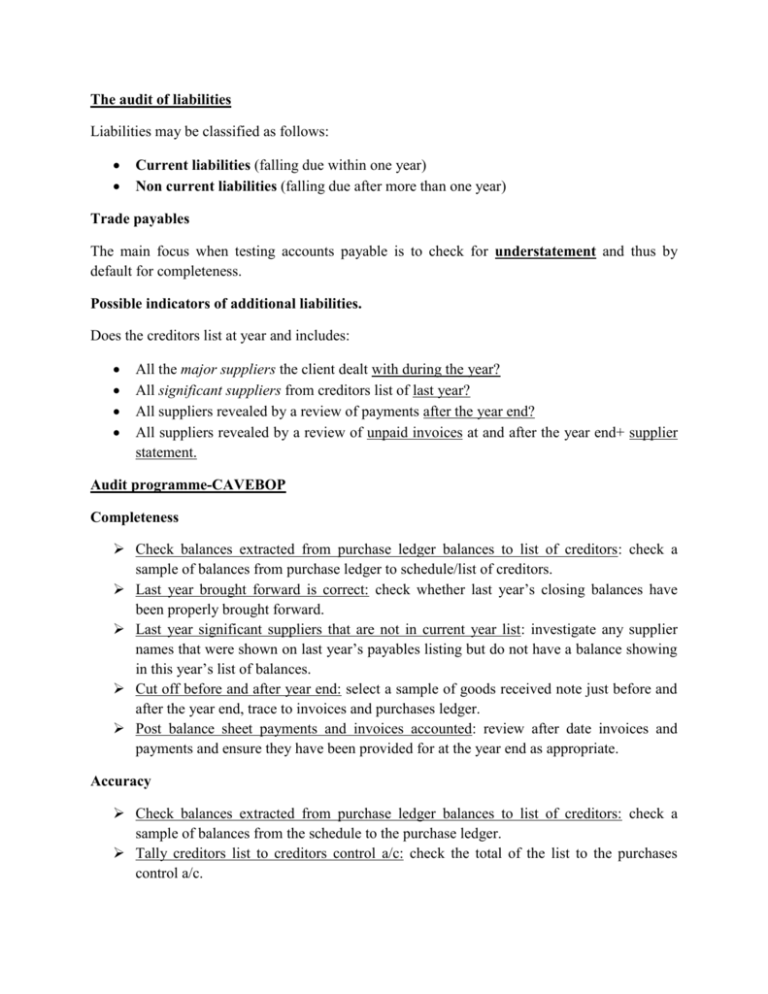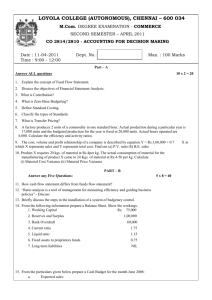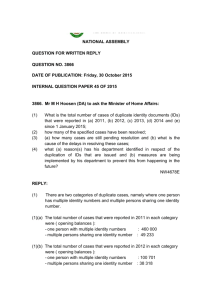The audit of liabilities Liabilities may be classified as follows
advertisement

The audit of liabilities Liabilities may be classified as follows: Current liabilities (falling due within one year) Non current liabilities (falling due after more than one year) Trade payables The main focus when testing accounts payable is to check for understatement and thus by default for completeness. Possible indicators of additional liabilities. Does the creditors list at year and includes: All the major suppliers the client dealt with during the year? All significant suppliers from creditors list of last year? All suppliers revealed by a review of payments after the year end? All suppliers revealed by a review of unpaid invoices at and after the year end+ supplier statement. Audit programme-CAVEBOP Completeness Check balances extracted from purchase ledger balances to list of creditors: check a sample of balances from purchase ledger to schedule/list of creditors. Last year brought forward is correct: check whether last year’s closing balances have been properly brought forward. Last year significant suppliers that are not in current year list: investigate any supplier names that were shown on last year’s payables listing but do not have a balance showing in this year’s list of balances. Cut off before and after year end: select a sample of goods received note just before and after the year end, trace to invoices and purchases ledger. Post balance sheet payments and invoices accounted: review after date invoices and payments and ensure they have been provided for at the year end as appropriate. Accuracy Check balances extracted from purchase ledger balances to list of creditors: check a sample of balances from the schedule to the purchase ledger. Tally creditors list to creditors control a/c: check the total of the list to the purchases control a/c. Vouch a sample of recorded creditors transactions to supporting documents: to agree the amount. Perform cut off tests both before and after the year end: to ensure posting made in the correct period. Reconcile creditors with monthly suppliers statements. Perform analytical procedures Valuation Confirm with creditors through circularization: where balances are material, no suppliers statement and internal control systems weakness. Ensure adequacy of provision for accrual: invoices not yet received. Letter of representation from management confirming all trade payables: have been included in financial statement. Ageing list of creditors. Check if there are set off: between receivable ledger and payable ledger. Perform analytical procedures: on payables, comparing age analysis with previous periods and payables days. Existence Carry out creditors circularization: where balances are material, no suppliers statement and internal control weakness. Vouch a sample of recorded creditors transaction to supporting documents. ( invoices, goods received etc) Check whether last year closing balance has been brought forward: e.g this year’s opening balance exist in balance sheet. Review payments to suppliers just after year end. Beneficial ownership Confirm with creditors- circularization. Vouch to supporting documentation. Occurrence Select a sample of transactions from purchase ledger, trace to invoices, GRN, PO and ensure the goods/services have been received Presentation and disclosure Compliance with accounting standards and companies act. Creditors are properly classified as to type and expected date of realization. Debit balances disclosed under current assets. Related party transactions properly disclosed. Note: additional evidence can be obtained from supplier statement reconciliation. Accrued charges Accruals occur where the expenditure has been incurred in the current period but where no invoice has yet been paid. Evidence will include: Considering the client’s own system (if any) for capturing accruals. Obtaining a schedule of accruals: ensuring that it is cast correctly, and comparing it with prior year accruals and performing other analytical procedures. Test checking a sample of accruals for correct calculation: referring to supporting invoices in the next period. Agree accruals to payments after year end. Short term borrowings No set off allowed for bank overdrafts: bank overdrafts are shown as liabilities, even though there may be other bank balances shown as an asset. Verifications of bank overdrafts is identical to the verification of cash balances Litigation and claims ISA- Audit evidence- additional considerations for specific items requires that auditors should carry out procedures to become aware of material litigation or claims involving the entity. Procedures Enquire with management. Examine board minutes. Examine correspondence with lawyers. Obtain list of matters referred to lawyers and consider any liabilities. Review the client’s system of recording claims.







